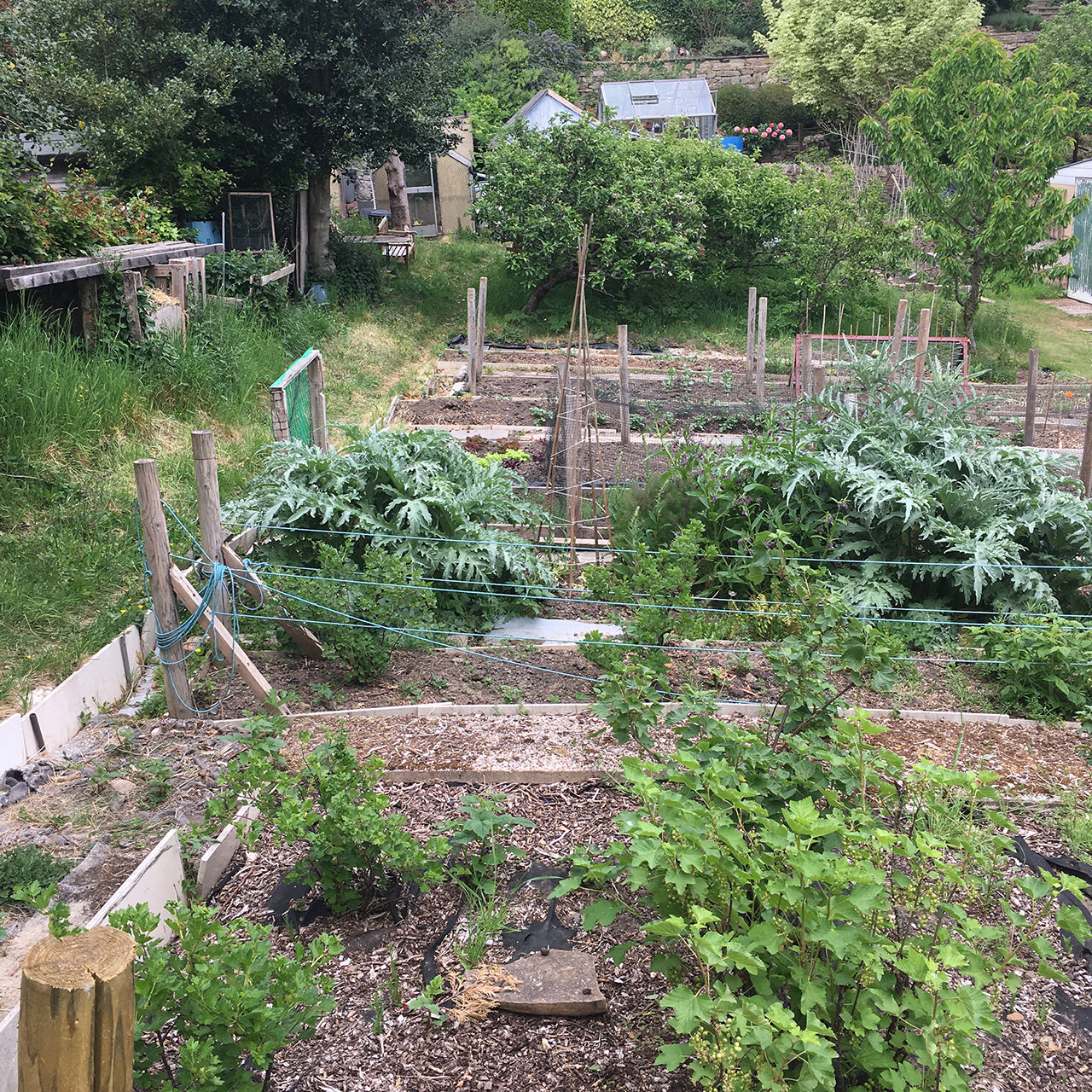Alice Fox
This is part of a series of blogs featuring inspiring artists and craft people who work with local natural materials.
©Carolynmendelsohn
Please tell us about your creative practice? My practice is based around using materials gathered and grown, mainly at my allotment plot. I trained in textiles after a short career in nature conservation. My work is underpinned by a strong passion for the natural world and a desire to work sustainably. I completed an MA in Creative Practice a couple of years ago and this helped me to really focus on the materials available to me on the allotment. I use plant fibres for making cordage (I’m exploring various soft basketry techniques at the moment) as well as processing and spinning flax and nettle for yarn. This is highly labour intensive for small amounts of usable thread, but the process is as important to me as any ‘finshed’ outcome. That engagement with the plot and everything that goes into nurturing, harvesting and then handling and coaxing fibres from the plants is completely immersive and imbues the resulting threads (and what I make with them) with so much more meaning than a commercially produced yarn. I use the plants that I grow for colour, for dyeing and for ink making, as well as botanical contact printing. I like to draw things from the plot using the inks made from allotment plants. Exploring the potential of everything on the plot constantly leads me in new directions.
How do you integrate natural materials in your practice? Natural materials are the basis of my work, but I also incorporate found objects in my work and will often experiment in bringing different materials together. There are a lot of plastics, paper, metal, ceramics and wood on the plot. I will make use of these when I can, even if it is just drawing them with the botanical inks.
Allotment shed & makeshift studio
Why do you choose to work with natural materials? I aim for my work to have as little impact on the environment as possible. Embracing natural cycles, working seasonally and using materials in a sustainable way are the key to my engagement with the plot and to my creative practice. I find natural materials beautiful and tactile – there is a kind of magic in taking something from the ground at the right time, processing it with care and coaxing it into a beautiful surface or structure. In some ways this is even more transformative if the fibre is classed as a weed or something unconventional as an art material.
Alice’s allotment
Where do you live and how does this influence your process of working with plants? I live in West Yorkshire, on the edge of Saltaire, which is part of Bradford. By using plants from my allotment (grown and self-seeded) I am using plants that are happy in the climate and conditions in my locality.
I understand much of your work is inspired by your allotment. Please tell me about your allotment? I grow a small amount of flax each year, to process into linen thread. I gather nettles on the plot, which are also processed for spinning. These are not sown but I encourage them to grow in certain parts of the plot. I gather brambles for fibre, bindweed stems and dandelion stalks from the margins of the plot and the wild bits in between allotments on the site. I use parts of plants that are grown primarily for food but that have fibrous leaves or stems, such as sweetcorn (husks), garlic (leaf) and other stems and strappy leaves as and when they are available. I grow various flowers as companion plants, but that can also be used as sources of colour – calendula, tagetes, coreopsis, sunflowers. I grew woad and weld for the first time last year, but I’ve generally resisted planting things specifically as dye plants, preferring to explore the potential of a normal working veg plot. I use wood from the various trees on the plot for ink making – apple, pear, beech and peach.
Dandelion braid with stone - Alice Fox
What processes are you drawn to and why? I am most comfortable with thread-based processes, resulting in constructed surfaces and structures. This might involve weaving, stitching, looping, twining, braiding… There are lots of steps involved before some of the fibres I work with become useable threads and each fibre requires slightly different handling or processing.
Freshly gathered bramble fibre - Alice Fox
What are the challenges to working with natural materials? Materials are only available at certain times of the year and the cycles of harvesting, drying, processing etc. take time. If you miss a window of opportunity you have to wait another year. Crops of each fibre are not necessarily abundant, but this makes them more ‘valuable’ as a result. It is easy to lose a year’s crop of something if stored badly – things can very quickly go mouldy if damp. Usable fibre has a long lead-in time but some of the colour-based activity can be much more immediate, enabling different ways of recording and mapping through drawing and printing.
What are you working on in 2021? I am developing a body of work that brings a series of found objects from the plot together with plant fibres. I am also working on a new book this year, which explores lots of the themes of my work.
How can people access your work?
My website features various exhibition projects I’ve undertaken, as well as listing workshops and exhibitions. I have published a number of books, which are available to order via my website. Plot 105, which I published last year, is all about the ways I use my allotment plot in my practice.
Website: www.alicefox.co.uk
Instagram and Twitter: @alicefoxartist
Facebook: www.facebook.com/alicefoxartist







